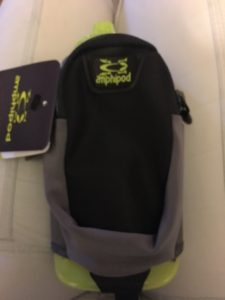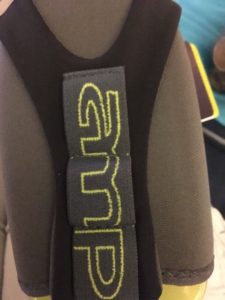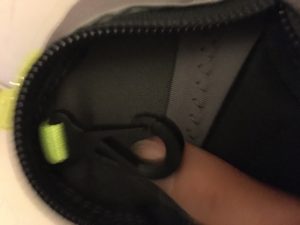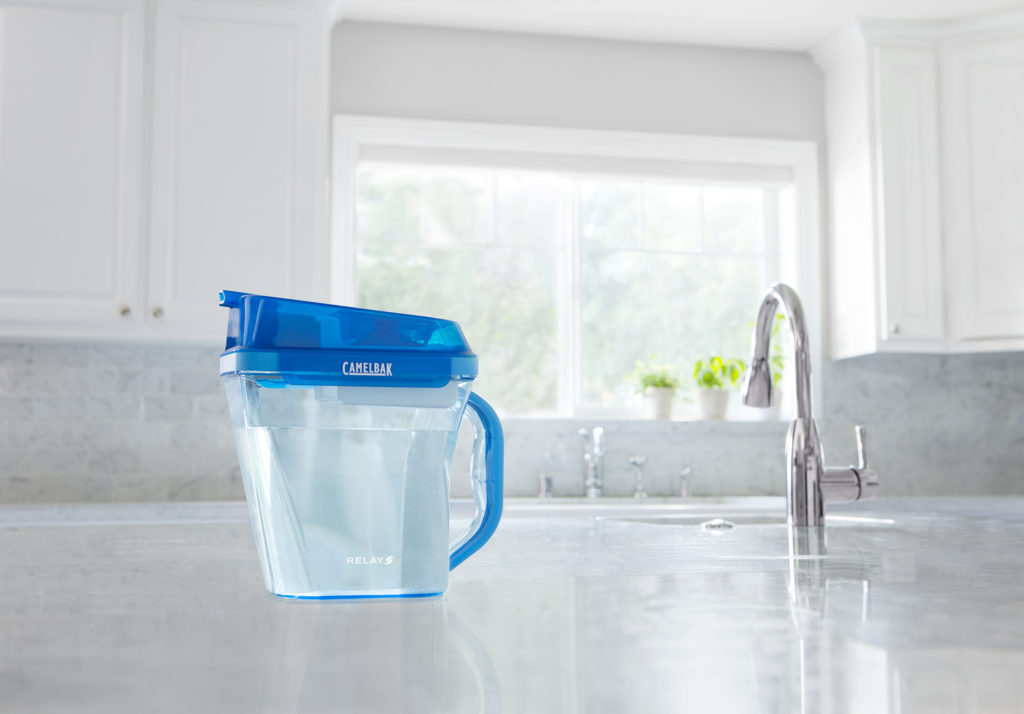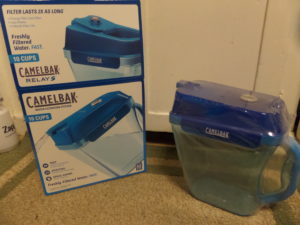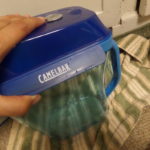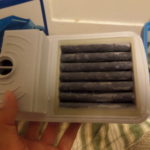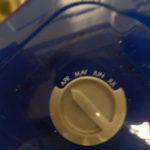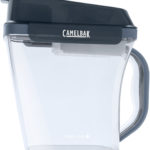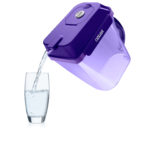Welcome to #GivingTuesday 2016!
Know Where Your Money Goes
The most important advice I have to give is this: know where your money goes. The best charities minimize their administrative and overhead costs, while maximizing the amount of your dollar that goes to programs and services. (Yes, I understand that making change happen requires paying rent on offices, and I agree that those working for the greater good deserve a decent paycheck.) The best charities are financially transparent, and will show you where the money came from and where it goes—look for financial reports or summaries on the website—so you know you’re not funding the CEO’s Masarti. Basically, don’t get scammed. A few resources for vetting charities are:
http://www.CharityNavigator.org
How Do I Decide Where My Money Goes?
One way of deciding where to donate is to choose an area of concern or a cause, decide whether you want to give locally or nationally or globally, and then find a charity to match.
Animals: Animal welfare, rehabilitation, prevention of cruelty, low-cost spay and neuter services
The Arts: Music, dance, theatre, painting, writing, sculpting, museums, performances for kids, arts education
Children: Adoption, child welfare, education, medical treatment
Education: Where did you go to elementary school, high school, college? Local schools, special needs schools, scholarships
Environment: Preservation of wild places and species, pollution control, water protection
Food: Hunger, food insecurity, community gardens
Health: Public education, disease prevention, medical research, treatment
Health, specifically Mental Health: Public education, disease prevention, research, treatment, suicide prevention, counseling
Human Rights: Women’s issues, refugees, gender and equality
Veterans: Transition to civilian life, support for any arena in which a vet needs help
Suggestions from Bain & Her Ninja Posse
I put out a call on Facebook and Twitter, asking where my friends are donating their money on #GivingTuesday The list below is every suggestion I received (as of midnight Sunday) plus my favorites.
American Civil Liberties Union (ACLU). https://www.aclu.org/ I’m a big fan of the Constitution. HUGE. In fact, I believe that all U.S. citizens should be able to fully enjoy the rights granted by the Constitution without undue limitations. I dislike voter suppression and miss the Voting Rights Act (this is not a political commentary—I encourage ALL to vote, regardless of their politics). As the ACLU puts it, “For almost 100 years, the ACLU has worked to defend and preserve the individual rights and liberties guaranteed by the Constitution and laws of the United States.” You can help them make it to 200.
Alley Cat Allies. http://www.alleycat.org Nominated by a friend, but you know how I feel about cats (love me, love my cat). ACA works with the animal control system, provides education to combat myths about cats, works to change outdated laws that kill cats, and combats cruelty to cats. They provide disaster support (did you know you can’t take your cat with you to a Red Cross shelter?), pass anti-animal cruelty laws, support a nationwide feral cat care network (including support for trap-neuter-return programs), provide cat-specific education and resources for vets, and do a host of other things. (There wasn’t an executive summary on their page—likely because they do so many different things in their advocacy for cats—but the website has a ton of information). As winter approaches, even if you don’t donate to Alley Cat Allies, please take some precautions to help outdoor cats: clean up antifreeze spills and avoid using salt to melt ice (both can poison cats); if you care for outdoor cats, provide a straw-lined shelter and put water in deeper bowls to prevent freezing.
Austin Pets Alive. http://www.austinpetsalive.org/ Nominated by a friend. (Mr. Potter came from Austin, but didn’t come from APA.) From their website: “[mission statement] To promote and provide the resources, education and programs needed to eliminate the killing of companion animals. When Austin Pets Alive! started rescuing animals in 2008, Austin was somewhat rich in resources that prevented births. For almost ten years, more and more resources were put into spay and neuter programs, but the live outcome rate at our city shelter was stuck around 50%. Of course, the population of Austin was quickly growing, so it’s likely that the spay and neuter resources were helping our live outcome rate from getting worse. While several resources were going into prevention and reducing intake, there was no effort to increase live outcomes from the shelter. Austin Pets Alive! saw that gap and created programs to save the key demographics of pets that hadn’t been making it out of our municipal shelter alive. These key groups of animals included puppies with parvovirus, unweaned kittens, cats with ringworm, dogs and cats in need of additional behavioral support and/or additional medical attention. By developing comprehensive, innovative programs that targeted these key groups of animals and pulling directly from euthanasia lists, Austin Pets Alive! has saved more than 25,000 dogs and cats since 2008.”
Back on My Feet. http://www.backonmyfeet.org/ Last year I ran an event for the Los Angeles Chapter, and this year BOMF is expanding into San Francisco. As they describe it, “Back on My Feet, a national organization operating in 12 major cities coast to coast, combats homelessness through the power of running, community support and essential employment and housing resources.” The BOMF model is unique in that it is based on running, and the strategy is to first restore confidence and self-esteem so that individuals are better equipped to take on employment, housing, and a new life. I particularly like that instead of talking about program members as “homeless people” (which sounds impersonal and like a permanent brand to me), BOMF refers to members as individuals experiencing homelessness—emphasizing that homelessness is a temporary situation, not a defining characteristic. They need volunteers (as do many of the groups on this page) as well as dollars.
Batworld. https://batworld.org/ I have personally been a fan of bats ever since I found out they eat mosquitos. The Batworld website is a great educational resource on why bats are valuable and what to do if you find one in your house. From the website, “Bat World Sanctuary is on the front line to end the mistreatment of bats. Each year we rescue hundreds of bats who might otherwise die. Lifetime sanctuary is given to non-releasable bats, including those that are orphaned, injured, and retired from the exotic pet trade, zoos and research facilities. Bat World was founded in 1994 and is a 501c3 non-profit, accredited organization with both the Global Federation of Animal Sanctuaries and the American Sanctuary Association. Donations allow us to continue our rescue efforts for bats.”
Breast Cancer Charities. There are multiple, state, local, nationwide, international. I’ve walked the 3 Day for the Cure supporting the Komen Foundation, and donated to the Faith Fancher charity (California). The nominating friend is fundraising for the 26.2 with Donna; her link is here: http://donate.breastcancermarathon.com/2017-Marathon/cancersucks
California Pit Bull Rescue. http://www.californiapitbullrescue.org/ Nominated by a friend who fosters their dogs. My favorite pit bull is a tank of a dog named Rosie, who is very gentle, thinks she is a lap dog, and is beta-dog to the tiniest terrier I’ve ever seen be an alpha dog. From the website, “California Pit bull Rescue (CPR) is organized for the purpose of rescuing at risk “pit bull” type dogs and facilitating social change to abolish the abuse, over breeding and mis-education surrounding the breed. CPR will achieve these goals through a SF Bay Area fostering network, fundraising programs, educational initiatives and financial/physical support for needy guardians of pit bull type dogs. Established in August 2012, CPR is a 501(C)3 all-volunteer nonprofit rescue organization with headquarters in Richmond, CA. 100% of our proceeds go toward our mission goals including awareness initiatives and providing food, supplies, housing, training and medical care for the dogs we take into our rescue program. We strive to house our dogs in foster homes where they can decompress and learn how to be loved and secure family members. They remain under CPR’s wing until they find the most appropriate permanent guardian with whom they can happily and peacefully live out their lives.” Definitely check out their “surprising facts about pit bulls” page.
Center for Sex and Culture. http://www.sexandculture.org/about Nominated by a friend. From their website, “The Mission of the Center for Sex & Culture is to provide judgment-free education, cultural events, a library/media archive, and other resources to audiences across the sexual and gender spectrum; and to research and disseminate factual information, framing and informing issues of public policy and public health. The Center for Sex & Culture aims to provide a community center for education, advocacy, research, and support to the widest range of people. We offer classes that run the gamut from informational to experiential. We host classes and cultural events as well as offer our space to other organizations and teachers as scheduling allows. We serve a nationally (in fact, globally) significant function, adding to the few accessible resources for sex education available to the public, not just academics or specialists. We have acquired various collections of books, papers, art, erotic material, personal collections from notable people within the sex-positive community, and other media.”
City Slicker Farms. http://www.cityslickerfarms.org/ Nominated by a friend, this is right up my alley: food policy and boots-on-the-ground that provides food security. She wrote, “My money goes to local food-based organizations: the food bank, Richmond Mission, and my fave: City Slicker Farms. CSF grows veggies and West Oakland and sells them to neighbors on a sliding scale. They also negotiate with landlords, then build back yard gardens in the neighborhood and give new gardeners a mentor to teach them how to grow their own food.” I know there are other organizations that do similar things in other locations, so if you like the idea but want to give locally, search online.
Clearwater Marine Aquarium. http://www.seewinter.com/ Nominated by a friend. Their motto is rescue, rehab, release. From the website: “We believe in preserving our environment while inspiring the human spirit through leadership in the rescue, rehabilitation, and release of marine life, environmental education, research and conservation. We are a non-profit 501(c)(3) organization.” They provide education to humans, and have webcams too!
Crisis Nursery Kids. http://crisisnurserykids.org/ Suggested by a friend; from the website: “The SAINT LOUIS CRISIS NURSERY (SLCN) is an independent, not-for-profit agency funded by donations and committed to preventing child abuse and neglect by providing short-term, emergency shelter for children, birth through age 12, whose families are faced with emergencies or who are in crisis. Founded in 1986, the Saint Louis Crisis Nursery has become a cornerstone in the fight against child abuse and neglect. In addition to the direct care of the children, the Crisis Nursery gives ongoing support and follow-up care to families and serves as a child/family advocate within the social services system. Families may voluntarily bring their children to any of the Nursery sites for a variety of reasons, including: Overwhelming parental stress, Parental or sibling illness or death, Lack of utilities, food or shelter, Domestic violence, Other emergency situations which jeopardize the safety and well-being of the child and necessitate temporary parent-child separation. The average stay of a child is two to three days. During his or her stay at the Crisis Nursery, each child receives 24-hour care by trained staff, medical services, meals and snacks, developmental assessment, therapeutic activities appropriate to the child’s situation, art activities.”
Donors Choose. https://www.donorschoose.org/ Mom was a teacher, so I really love this one. Crowdfunding can build stuff, and that includes better education for children. Donors Choose has a unique model where teachers write proposals for specific projects, and donors choose the project(s) where they want their money to go. My favorite option is to choose the high priority projects in schools that have the highest poverty, but you can also choose by location or by subject. If you’ve ever known a teacher—especially one in public education—you know that teachers often spend hundreds of dollars out of their own pockets to buy classroom supplies, even though they aren’t making a lot of money themselves. This is a way that anyone can help, even if you don’t have a kid. Most of these projects just need a few hundred dollars, and each of them can change a kid’s school experience.
Electronic Frontier Foundation. http://www.eff.org I have a deep love for the EFF that dates back to the days when you found something on the internet by typing in a word or company name and adding “.com” to the end in the hopes that you’d find what you wanted. EFF is defending your rights in the digital world. As the internet of things grows, that digital world is even bigger. As EFF explains, “The Electronic Frontier Foundation is the leading nonprofit organization defending civil liberties in the digital world. Founded in 1990, EFF champions user privacy, free expression, and innovation through impact litigation, policy analysis, grassroots activism, and technology development. We work to ensure that rights and freedoms are enhanced and protected as our use of technology grows.” The EFF website is also an excellent resource for anyone concerned about privacy, government access to personal information, electronic record-keeping, and commercialization of your data.
The Elephant Sanctuary. https://www.elephants.com/ Nominated by a friend, this non-profit runs a Tennessee sanctuary that provides long-term care for elephants. From the website, “The Elephant Sanctuary in Tennessee exists to provide captive elephants with individualized care, the companionship of a herd, and the opportunity to live out their lives in a safe haven dedicated to their well-being, and to raise public awareness of the complex needs of elephants in captivity, and the crisis facing elephants in the wild.” Elephants are intelligent creatures with complex needs. The Sanctuary itself is a true sanctuary, and is closed to the public. There are elephant cams though, so you can sneak a peek.
The Epilepsy Foundation of San Diego County. http://epilepsysandiego.org.s163008.gridserver.com/ Nominated by a friend, who is fundraising and seeking donations in the name of Serena’s Crusaders. https://www.facebook.com/Serenascrusaders From their website, “The Epilepsy Foundation of San Diego County is a 501(c)(3) non-profit organization serving the San Diego community since 1954, offering personal advocacy and counseling, seizure first aid training, Expressive Arts therapy, camp and a variety of supportive services. All these services are free and are available to anyone whose life is touched by epilepsy, regardless of the severity of the disability and without regard to race, creed, age, sex or nationality.”
Fix our Ferals. http://fixourferals.org/home/ Nominated by a friend. From their website, “Fix Our Ferals (FOF) is a community-based, non-profit organization that promotes trap-neuter-return (TNR) to humanely reduce the cat population in the San Francisco East Bay. During our first eleven years from our founding in 1998 until 2011, FOF held 101 ‘mash-style’ clinics at borrowed facilities. Then in July 2012, to meet overwhelming demand for low-cost spay-neuter, FOF opened our own clinic facility, the Fix Our Ferals Spay-Neuter Center. Our mission is to help both people and cats in the San Francisco East Bay by: (1) Advocating TNR as the only humane and effective method of population control, to replace the cruel and failed practice of trap-and-kill; (2) Providing affordable sterilizations to community members and rescue organizations; (3) Educating community members, leaders, and decision-makers about TNR, in order to empower neighborhoods to control and monitor their own free-roaming neighborhood cats.
Food Banks. Everywhere. Hunger exists, right here at home, probably right in your backyard. Ordinary looking people you walk past every day can be struggling to put enough food on the table and still look like everything is fine—and that’s in part because food insecurity is embarrassing to many people. Poverty is only one of the factors associated with hunger; food insecurity increases when the economy isn’t doing well, when unemployment goes up, and when housing prices escalate. According to Feeding America, in 2015 there were 42.2 million Americans living in food insecure households. Find your local food bank and donate cash, which they can spend very efficiently. You can even be lazy on this one, as your local grocery story probably has a donation barrel or a pre-packed suggested donation bag this time of year. Hunger knows no season. Think about this every time you buy food. What would happen if we each donated one canned item for every grocery trip?
Friends of Berkeley Animal Care Services. http://friendsofbacs.org/ Nominated by a friend. From their website, “Friends of Berkeley Animal Care Services raises much-needed funds to support programs and services that help provide a safe and happy environment for animals waiting for their forever homes at Berkeley’s municipal shelter.” The majority of municipal animal shelters are underfunded and tasked with doing much more than is actually possible on their meagre budgets. Many are subject to state and local laws, but not required to report or provide specific services. There’s probably one near you that could use your help!
Friends of the Oakland Animal Services. http://www.oaklandanimalservices.org/how-to-help/donate/friends-of-oakland-animal-services/ Nominated by a friend. From the website, “Friends of Oakland Animal Services (FOAS) is a nonprofit 501(c)(3) organization dedicated to improving the quality of life for shelter animals. Founded by Oakland Animal Services volunteers in December 2005, FOAS was created to support the municipal shelter’s efforts to better care for thousands of animals each year in the face of Oakland’s ongoing budgetary challenges. Our mission is to provide homes, health, and happiness for Oakland’s homeless animals. Some of our main funding areas include: Emergency and specialized medical care
Equipment needed to help veterinary staff better care for shelter animals on-site; Adoption outreach and foster program support; The creation of indoor/outdoor play areas and better animal housing, including general supplies and repairs; Transportation of animals to both local and out-of-state partner rescue groups; Tools to help with Oakland field services, including digital cameras for staff to document cruelty cases and laser thermometers to determine the temperature inside parked cars; Materials, training, and other supplies for the volunteer program that is integral to the quality of life for shelter animals.”
Girl Scouts of the U.S.A. http://www.girlscouts.org/ As a Life Member and Gold Award recipient, this one is a no-brainer for my list. There are even programs for girls and their imprisoned mothers that From a friend who nominated them: “Girl Scouts of the USA have always been on my giving list. It’s not only the first organization that facilitated leadership and entrepreneurship opportunities for me, as a child. I know how dollars are stretched to serve the greatest number of girls (as a former Council staff member), and how GSUSA’S commitment to pluralism, from the organization’s inception has been at the forefront of ‘leveling the playing field’ for girls (marginalized, or not). Plus, it’s FUN! (And often overlooked).” You can give to the national organization, or find your local Girl Scout Council (which likely maintains camping facilities in addition to providing programs for girls).
Girls on the Run. https://www.girlsontherun.org/ Suggested by a friend who is also a runner, though this is a group I’m familiar with too; their running programs are free to participants, and are about WAY more than just running. Here’s a snippet from their website: “One girl put it this way, ‘I learned that I am the boss of my brain.’ Girls on the Run inspires girls to take charge of their lives and define the future on their terms. It’s a place where girls learn that they can. No limits. No constraints. Only opportunities to be remarkable.” There are local councils all over the country, you can find yours on the website or donate to the national organization. They also need volunteers to train to present the curriculum, and to help support their runs.
Give Kids the World Village. http://www.gktw.org/ Nominated by a friend who wrote, “one of the highest rated charities in the world. They work with organizations like Make a Wish to provide a place for kids with diseases and their families to stay while visiting Orlando.” According to the website, “Give Kids The World Village is a 79-acre, nonprofit ‘storybook’ resort in Central Florida. Here, children with life-threatening illnesses and their families are treated to weeklong, cost-free vacations.”
Global Fund For Widows. http://globalfundforwidows.org Nominated by a friend. This organization focuses on widows because in the developing world, losing a husband can be devastating to a woman and to her children. Widow often lack favorable inheritance rights (in other words, the husband’s family might get all of the goods and money that used to support the family), lack a social and governmental support system, lack childcare options, and lack marketable skills and education. “The Global Fund for Widows assists its widows by creating employment opportunities where no other opportunity exists. The Global Fund for Widows seeks to align a widow’s skills, abilities, interests and financial needs, with employment options created by the program or through partnerships with other organizations and employers. With financial stability, widows are inspired to become self-reliant and self-accountable. And, in this way, they are able to extricate themselves from poverty.”
Heifer International. https://www.heifer.org/ Nominated by two friends, one of whom wrote, “I favor https://www.heifer.org (Heifer International) which donates living animals and plants, teaches husbandry, and requires gift recipients to pass the gift on to others in their community.” Yes, I am personally a vegetarian, but I don’t live in poverty either. Many of Heifer’s gifts allow women to start small businesses and become financially independent. Heifer supports sustainable agriculture, plants trees, and helps end hunger
Ian Clemens Foundation. http://ianclemensfoundation.org/ Nominated by my Dad’s lovely wife. Ian Clemens was diagnosed with a rare form of brain cancer at age 17 and died just a month after he was diagnosed. His family and friends have chosen to honor his memory by providing scholarships for engineering students who graduated from Livonia (MI) high schools, because that’s where Ian graduated, and he wanted to be an engineer. The foundation also helps families with children battling cancer by helping children’s cancer center emergency funds (available to help families with travel, lodging, loss of income, and medical expenses), and raises awareness of organ and tissue donation (because at age 17, Ian had chosen to become a donor prior to his death).
Immaculate Heart Radio. https://ihradio.com/ I’m super not-Catholic, as you know. A friend wrote that this cause is “near and dear to her heart,” however, and she supports their work. According to their website, “Immaculate Heart Radio is a non-profit lay apostolate that operates a growing network of Catholic radio stations in the West. We are dedicated to sharing the heart of the Christian faith and changing lives through radio airwaves.” IHR is an educational charity. There are a variety of religious and faith-based organizations doing all sorts of things in the world, so if this one isn’t for you, there is likely another one that is.
International Rescue Committee. https://www.rescue.org/ Nominated by a friend working with IRC to help Syrian refugee families start their new lives in Sacramento. From their website, “The International Rescue Committee helps people whose lives and livelihoods are shattered by conflict and disaster to survive, recover, and regain control of their future.” They focus on health, education (especially for girls and women, who may not even know what their rights are), and other essentials. They do three main things: (1) Ensure that people in crisis areas have what they need to survive—including food, water, shelter and basic household items—without falling into debt or resorting to desperate measures. (2) Ensure that people resettled in the United States have what they need to rebuild their lives and grow their assets. (3) Ensure that people can become self-sufficient by engaging in safe and decent work and by managing and saving their resources.
JDRF. http://www.jdrf.org/ Nominated by a friend. Type 1 diabetes used to be called “childhood diabetes” because it is a disease you are born with and have to live with for life, though it can also be diagnosed and develop later in life. In Type 1 diabetes, an autoimmune disease, the pancreas stops making insulin. JDRF funds research for treatment and eventually a cure for Type 1 diabetes. (Did you know there are different treatments for Type 1 than there are for Type 2?) JDRF research includes artificial pancreas, beta cell replacement, glucose control, prevention, and restoration. JDRF also provides support, information, education, and community for individuals and families affected by Type 1 diabetes.
Karam Foundation. http://www.karamfoundation.org/ Per my friend, “recommended by my friend who has lots of connections in Syria.” #Dares4Syria campaign this #GivingTuesday. This charity is focused on helping the children of Syria, both those that stay in Syria and those who leave. Inside Syria, Karam provides emergency support for schools inside Syria. Outside Syria, the focus is on refugee children: “Karam Foundation is providing long-term support in the form of smart aid for Syrian refugee families in need. We strive not to just place aid-bandaids but instead develop sustainable, future-building tools that: Stabilize families, educate children, prevent child labor, discourage early teen marriages, and keep refugees in host countries close to Syria.”
Libraries. Everywhere. You want to talk underfunded community resources? In many parts of the country, you just have to look at the library—if your town still has a library. The Dunning-Hough Library was my very favorite place in Plymouth, MI and I remember when it was housed almost entirely in a single room. (I’m thrilled to see where it has grown today!) Libraries need money to buy and repair books, subscribe to magazines, pay for utilities, maintain computer systems, pay librarians, provide programs for children, and expand their offerings into the digital world. My libraries in Portland, Austin, and Alameda have e-book lending in addition to DVDs, CDs, and more traditional media. Libraries often provide meeting space for community groups, basic literacy programs for adults, tutoring for children, and a safe place for students of all ages to study and learn.
Michigan Humane Society. http://www.michiganhumane.org/ Nominated by a friend, but also a favorite of Mom (Elaine Bain, in case you’d like to donate in her memory). MHS is the largest and oldest animal welfare organization in Michigan. MHS services include care for animals and placement in responsible permanent homes. They have affordable microchipping program and a low-cost spay/neuter program, a pet food bank, a pet behavior hotline, and more. The website is filled with all manner of information about pets, how to deal with pet behavior, adoption stories, lost pets, travel with pets, and end of life care for pets. You need pet info, MHS has you covered—and with the internet, that’s even if you don’t live in Michigan. Feel free to support your state’s MHS equivalent.
National Center for Lesbian Rights. http://www.nclrights.org/ I recently learned about NCLR and all the work they do (which benefits many people who are not lesbians too!). Their work fits in perfectly with my desire for every U.S. citizen to fully enjoy the rights guaranteed by the Constitution. NCLR is working to achieve LGBT equality through litigation, legislation, policy, and public education. They work on immigration, asylum, healthcare, housing, sports, prisoners’ rights, parenting, marriage, child custody, and so much more. They provide legal assistance to individual clients, and have a website with resources.
National Center for Transgender Equality. http://www.transequality.org In their own words, “The National Center for Transgender Equality is the nation’s leading social justice advocacy organization winning life-saving change for transgender people. NCTE was founded in 2003 by transgender activists who recognized the urgent need for policy change to advance transgender equality. With a committed board of directors, a volunteer staff of one, and donated office space, we set out to accomplish what no one had yet done: provide a powerful transgender advocacy presence in Washington, D.C.”
Leslie Science & Nature Center. http://www.lesliesnc.org/support-us/donate Nominated by a friend. According to their website, “Leslie Science & Nature Center educates and inspires children and adults to discover, understand, and respect their natural environment.” They have nature camps, education programs, and host groups of school kids and Scouts. Their raptor center, critter house, and Black Pond Wood are open to visitors, too.
Multiple Myeloma Research Foundation. https://www.themmrf.org/ Nominated by a friend. I’ve learned myeloma is more common than I thought, since many of my friends seem to know someone who is affected. From their website, “The Multiple Myeloma Research Foundation (MMRF) helps accelerate the development of next generation multiple myeloma treatments to extend patient’s lives, and lead to a cure. MMRF brings treatment to multiple myeloma patients 60% faster than the average through collaboration with best in class partners in the US and Internationally. In the process, we are changing the way cancer research is conducted. MMRF, a 501(c)(3), is the number one private funder of multiple myeloma research in the United States.”
The Nature Conservancy. http://www.nature.org/ Nominated by a friend. From their website, “The Nature Conservancy is the leading conservation organization working around the world to protect ecologically important lands and waters for nature and people. We address the most pressing conservation threats at the largest scale. Thanks to the support of our more than 1 million members, we’ve built a tremendous record of success since our founding in 1951: We’ve protected more than 119 million acres of land and thousands of miles of rivers worldwide — and we operate more than 100 marine conservation projects globally. We are impacting conservation in 69 countries — protecting habitats from grasslands to coral reefs, from Australia to Alaska to Zambia. We address threats to conservation involving climate change, fresh water, oceans, and conservation lands.”
National Coalition for Sexual Freedom. https://www.ncsfreedom.org/ Nominated by a friend. “The NCSF is committed to creating a political, legal and social environment in the US that advances equal rights for consenting adults who engage in alternative sexual and relationship expressions.” Did you know that many states still have laws on the books criminalizing sex acts between consenting adults? Personally, I don’t want the government (or you!) deciding what I can and can’t do with my body in the privacy of my own bedroom.
Noah’s Light Foundation. https://www.noahslightfoundation.org/ I fundraised for Noah’s Light as a runner because they are awesome. Their goal is to find a cure for pediatric brain cancer. Amber Larkin was Noah’s mother; Noah died of pediatric brain cancer and she founded Noah’s Light in his honor. NLF has funded the NOAH Protocol, which in 2014 went into clinical trials as the first pediatric brand cancer trial in 30 years. Yes, 30 years. The NOAH protocol started with cells from Noah, and is aimed to reduce and eliminate several types of pediatric brain cancer, and with great results: “Throughout the previous year, The NOAH Protocol has been up and running. Children have been through various stages of treatments and to date, no toxicity has been attributed to immune cell infusion. Because of this success, the researchers have been cleared by the FDA to provide the next, higher dose level in the trial. In addition to moving to the next level for the protocol, a co-trial is underway that uses a specialized imaging technique to track the movement of NK cells as they enter the brain to fight cancer cells.” Worthy work, since so few dollars donated to cancer research go to pediatric cancer, and don’t children deserve a chance?
Northwest Children’s Theater. http://nwcts.org/ Nominated by a friend who wrote, “I work for Northwest Children’s Theater […] and I must confess they’re my favorite. They spend every donated dollar on programs for disadvantaged youth, including free sensory friendly performances, Interns NW (a free program for teenagers that want to pursue theater as a career), free outreach programming to Title 1 schools, free preview shows, and scholarships to camps and classes. For 24 years they’ve had a policy to never turn a child or family away for lack of funds, and they have stood by this commitment, even when the founders had to use their own money to make sure every kid could go. Because of this, it’s one of the only places I’ve ever worked for that is truly ethnically and economically diverse, and they work hard to remove damaging stereotypes from their plays (which also have talented, diverse casts). It’s quite a gem.”
Oregon Natural Desert Association. https://onda.org/ Nominated by a friend. From their website, “Oregon’s desert is known for its stunning beauty, biological significance, recreational opportunities and cultural value. Much of Oregon’s high desert is publicly-owned land primarily managed by the Bureau of Land Management (BLM). ONDA works with this agency and others every day to ensure that vast swaths of your lands remain wild, open spaces that will be there for future generations to enjoy. These lands are your lands! Over 8 million acres of these lands qualify as Wilderness but are yet to be protected as such. These lands as a whole provide important habitat for fish and wildlife such as pronghorn antelope, Greater sage-grouse, trout and salmon. Until permanent protections are gained, they are at risk.”
The Pajama Program. http://www.pajamaprogram.org/ Nominated by a friend. Bedtime is something I remember as comforting and homey—I always had nice jammies and plenty of books to read (or have read to me). It’s not the same for children in shelters, many of whom arrived with none of their own things and are facing bedtime in a scary and unfamiliar place. From the website, “By distributing new pajamas and new books to children in need, we are able to help provide children with a comforting, nurturing bedtime and literacy support. Our reading center helps to bridge the 30,000,000 word gap and gives these children the opportunity to read one on one with an adult, something they may not otherwise experience.”
Planned Parenthood. https://www.plannedparenthood.org/ Nominated by a friend who noted, “Planned Parenthood have had a special place in my heart. As a college student, who had no medical benefits, Planned Parenthood WAS my primary care provider (1988-1993) until I got my first ‘big girl’ job (with benefits). If it hadn’t been for PP, I would not have had a diagnosis or treatment for HPV.” This could have been written by at least 100 women I know personally—most of whom had a period with no health insurance or access to health insurance and would have gone without basic health care. From the website, “Planned Parenthood delivers vital reproductive health care, sex education, and information to millions of women, men, and young people worldwide.” You can give nationally, or to your local/regional Planned Parenthood (which you can find via the link).
The Pongo Fund. http://www.thepongofund.org/ Nominated by a friend who explained, “The Pongo Fund are miracle workers. $1 donated becomes nearly $2 dollars spent towards providing food for not only animals, but their humans as well. They provide medical care that PAW Team (Portland Animal Welfare Team) can’t provide soon enough. They look at the animal and person as a unit/whole and do whatever they can to keep them together. Sometimes it’s getting a new collar and leash others it could be socks and shoes. They always exceed.” I’ve donated to pet food drives held for the Pongo Fund when running in Portland.
Public Radio. Everywhere. I’m a fan of KOPB (Oregon) and KQED (San Francisco), but there are local affiliates everywhere. One year I spent so much time in San Diego that I joined KPBS. You can join your local station at any time during the year, not just during the pledge drive time. You can also donate directly to NPR (National Public Radio) or PRI (Public Radio International), both of which produce news and entertainment.
Rape, Abuse & Incest National Network (RAINN). https://www.rainn.org/index.php Nominated by a friend, RAINN describes itself as “the nation’s largest anti-sexual violence organization and was named one of ‘America’s 100 Best Charities’ by Worth magazine. RAINN created and operates the National Sexual Assault Hotline (800.656.HOPE, online.rainn.org y rainn.org/es) in partnership with more than 1,000 local sexual assault service providers across the country and operates the DoD Safe Helpline for the Department of Defense. RAINN also carries out programs to prevent sexual violence, help victims, and ensure that perpetrators are brought to justice.”
Save the Children. https://www.savethechildren.net/ Nominated by a friend. An overview, from the website: “Save the Children believes every child deserves a future. Around the world, we give children a healthy start in life, the opportunity to learn and protection from harm. We do whatever it takes for children – every day and in times of crisis – transforming their lives and the future we share. In 2015, we reached over 62 million children directly through our and our partners’ work.” Save the Children provides safe play areas in refugee camps, secures education for vulnerable children, improves access to food and healthcare, and provides other services and education.
Seedlings. http://www.seedlings.org/ Seedlings started in a basement, with the goal of increasing the availability and decreasing the cost of braille books for children. In their own words, “Seedlings braille materials have opened up new worlds for thousands of children. Seedlings Braille Books for Children is keeping visually impaired children in the mainstream of popular literature and is reaching braille readers in all 50 states and several foreign countries. Seedlings contributes to literacy by providing visually impaired children equal opportunity to develop the love of reading. At this time, less than 20% of the 50,000 blind children in the United States are proficient in braille. All too often, the written word has been inaccessible to them, and this is what we are hoping to change. Braille books are provided at each level of development, from toddler board books to classic literature for older children. Just as sighted children learn to “read” as they are exposed to the printed word, so do visually impaired children who are exposed to the tactile page at an early age. New titles are added every year as highly skilled volunteer braille transcribers spend countless donated hours translating print books into braille and preparing them for computer disk to await production. Once the original translation is complete, additional books can be printed as needed. Exposure to popular, high quality braille literature throughout childhood increases the likelihood of children developing into able braille readers.”
Sponsor a Sister, via Women for Women International. http://www.womenforwomen.org/sponsor-a-sister Nominated by a friend who wrote, “I’m on my fifth or sixth sponsored sister by now. They write heart-wrenching letters of thanks. ‘Dear friend who loved me before you knew me…’” Donations provide a range of services from job skills education and business training to access to food and clean water. As the website explains, “With more than 20 years of on-the-ground experience working with women in countries affected by conflict, Women for Women International understands that a comprehensive program addressing the social and economic empowerment of marginalized women is the most effective approach.”
Stop Abuse for Everyone (SAFE). http://www.safeaustin.org/ Nominated by a friend who works there. From their website, “The SAFE Alliance is a structured partnership between SafePlace and Austin Children’s Shelter, two organizations that serve the survivors of child abuse and neglect, sexual assault and exploitation, and domestic violence. Our Mission: To lead in ending sexual assault and exploitation, child abuse and domestic violence through prevention, intervention and advocacy for change.” They have a hotline, child education programs including a charter school for survivors, and more.
St. Jude Children’s Research Hospital. https://www.stjude.org/give.html A charity that works with runners to raise money for a great cause: life-saving medical treatment for children with serious diseases. From their website, “The mission of St. Jude Children’s Research Hospital is to advance cures, and means of prevention, for pediatric catastrophic diseases through research and treatment. Consistent with the vision of our founder Danny Thomas, no child is denied treatment based on race, religion or a family’s ability to pay.” The majority of St. Jude’s funding comes from individual donations, and families are not billed for medical services.
Toys for Tots. http://www.toysfortots.org/ If you don’t know where to donate a physical toy, you can look up your local toy drive online. You can also donate money. From the website, “The mission of the U. S. Marine Corps Reserve Toys for Tots Program is to collect new, unwrapped toys during October, November and December each year, and distribute those toys as Christmas gifts to less fortunate children in the community in which the campaign is conducted.”
To Write Love on Her Arms. https://twloha.com/ Nominated by a friend. From the website, “To Write Love on Her Arms is a non-profit movement dedicated to presenting hope and finding help for people struggling with depression, addiction, self-injury, and suicide. TWLOHA exists to encourage, inform, inspire, and also to invest directly into treatment and recovery.” So many of my friends have struggled—and do struggle—with these problems, and it’s time we stop stigmatizing them.
Team RWB. https://www.teamrwb.org/ In case you’ve been living under a rock, Team RWB has been out in force at all sorts of races, mud runs, workouts, and other team events. From the website, “Team RWB’s mission is to enrich the lives of America’s veterans by connecting them to their community through physical and social activity.” You can donate to the national organization or find a local one. They always need volunteers, too.
Vortex. http://www.vortexrep.org Nominated by a friend. There is no way I can do their work justice by selecting a piece from their description of what they do—which includes presenting new works (plays, opera, ritual theatre), educational programming including a summer children’s program, and providing a “green” performance venue (recycling, composting) that includes a butterfly sanctuary. Their mission: “We conjure and navigate the storm of imagination
with urgent, unashamed art that dares to dream the world in which we want to live.
This magic emanates from our cultural harbor, embraces diverse communities, breaks down barriers, and opens channels for vital exchange.”
Water for People. https://www.waterforpeople.org/ Nominated by a friend who said, “Just having access to the most basic of needs can make a huge difference.” It’s true—have you ever had to live without unfettered access to clean water? Ever visited a place where you might have water for an hour, but it isn’t drinkable? According to Water for People, “1.8 billion people around the world don’t have access to safe water and 2.4 billion lack access to adequate sanitation. Women and children spend more than 4 hours walking for water each day, and more than 840,000 people die each year from water-related diseases. We’re here to change that. We want to see communities break free from the cycle of poverty and spend time growing, learning, and thriving, instead of walking for water and fighting off illness.”
Tell me?
Where are you sending resourcs this #GivingTuesday? Is your favorite not on my list? Leave a comment with a link and why you choose!
